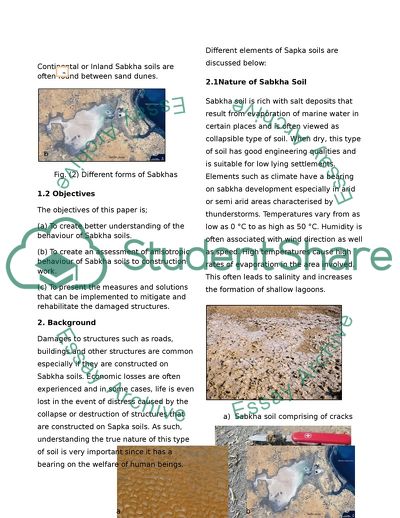Cite this document
(Sabkha Soils: Problems And Solutions Essay Example | Topics and Well Written Essays - 1750 words, n.d.)
Sabkha Soils: Problems And Solutions Essay Example | Topics and Well Written Essays - 1750 words. https://studentshare.org/geography/1850449-geotechnical-hazards-induced-by-sabkha-problems-and-solutions
Sabkha Soils: Problems And Solutions Essay Example | Topics and Well Written Essays - 1750 words. https://studentshare.org/geography/1850449-geotechnical-hazards-induced-by-sabkha-problems-and-solutions
(Sabkha Soils: Problems And Solutions Essay Example | Topics and Well Written Essays - 1750 Words)
Sabkha Soils: Problems And Solutions Essay Example | Topics and Well Written Essays - 1750 Words. https://studentshare.org/geography/1850449-geotechnical-hazards-induced-by-sabkha-problems-and-solutions.
Sabkha Soils: Problems And Solutions Essay Example | Topics and Well Written Essays - 1750 Words. https://studentshare.org/geography/1850449-geotechnical-hazards-induced-by-sabkha-problems-and-solutions.
“Sabkha Soils: Problems And Solutions Essay Example | Topics and Well Written Essays - 1750 Words”. https://studentshare.org/geography/1850449-geotechnical-hazards-induced-by-sabkha-problems-and-solutions.


